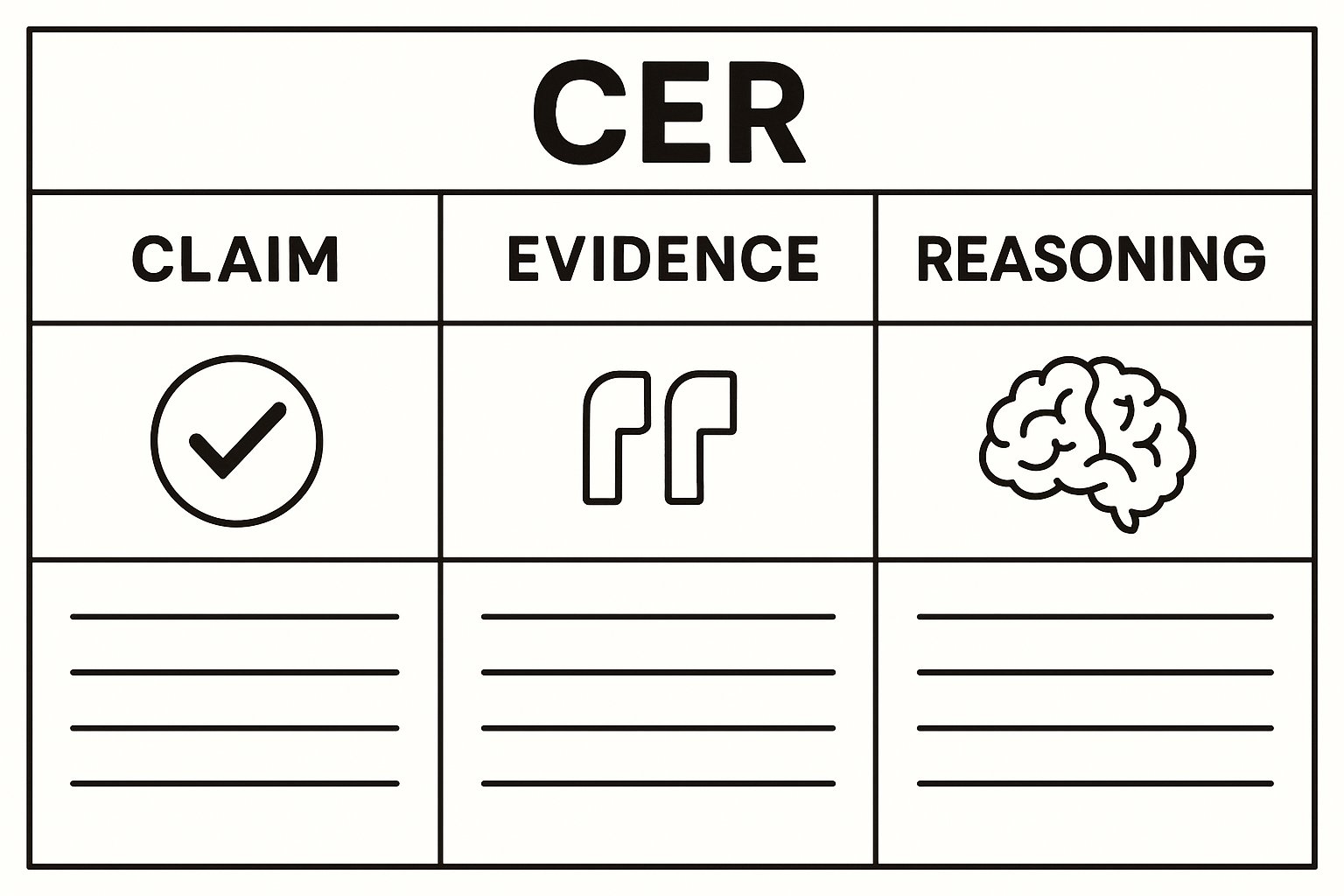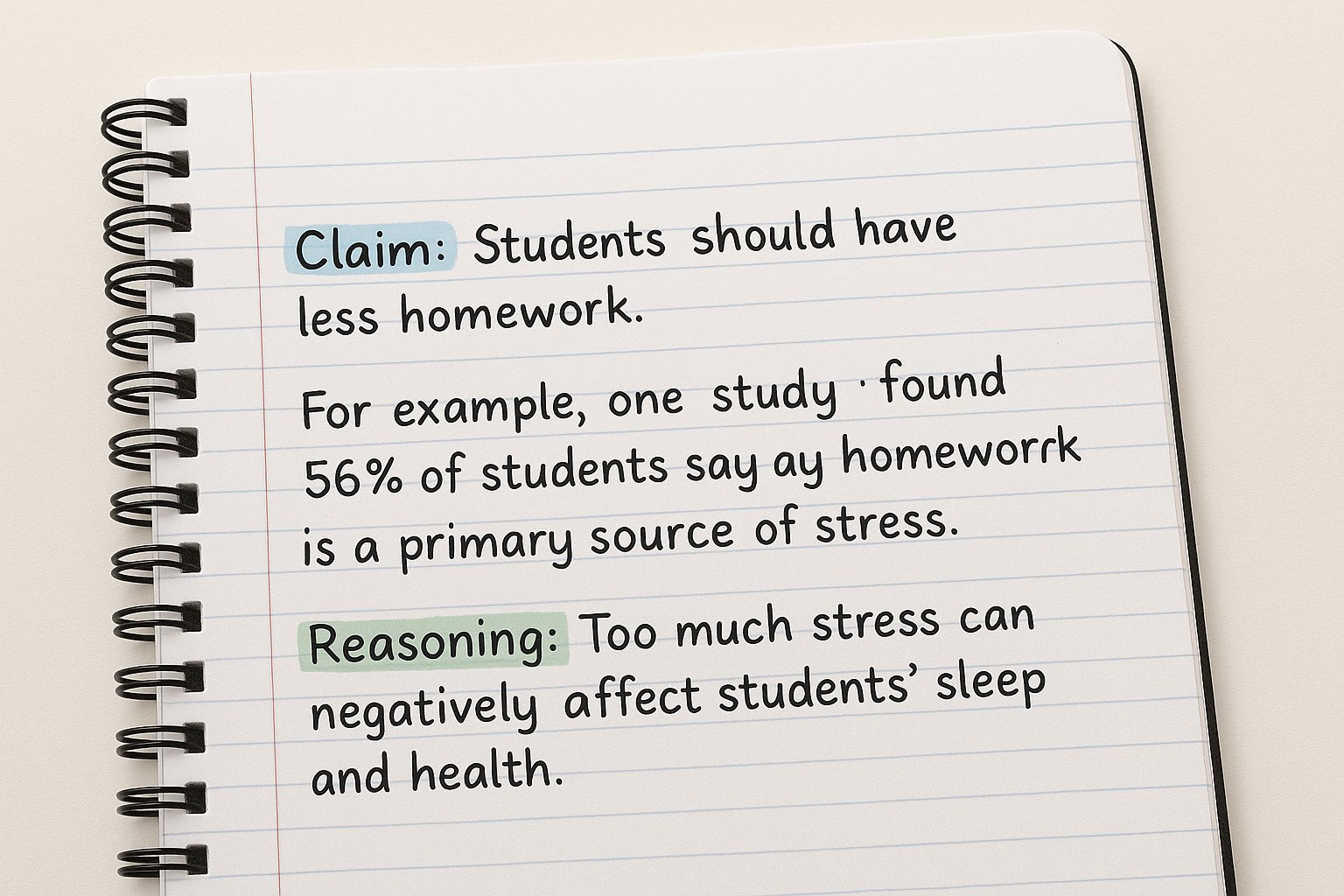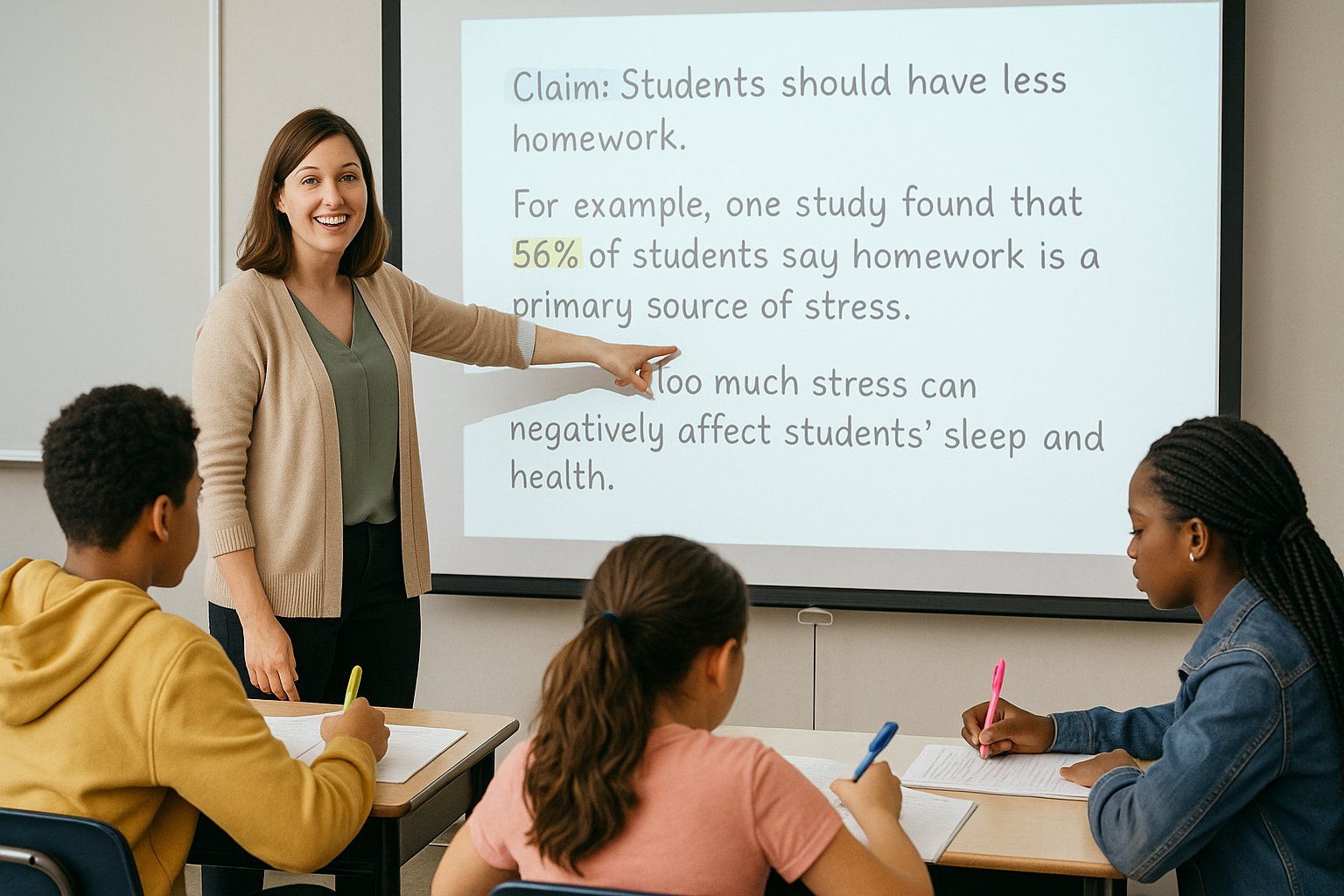Argument Writing · CER
How to Teach Claim, Evidence, and Reasoning (CER) in Middle School ELA: The Ultimate Guide

What Is CER in Student-Friendly Language?
In grades 6–8, students are asked to “support a claim with evidence” constantly—in reading responses, essays, and even science labs. The CER framework gives them a simple, repeatable structure:
- Claim: A clear statement that answers the question.
- Evidence: Specific details or quotes from the text that support the claim.
- Reasoning: An explanation that connects the evidence back to the claim and shows why it matters.
When students understand CER, their writing becomes clearer, more convincing, and much easier to assess.
Why CER Matters in Middle School ELA
CER is more than a formula; it’s a way of teaching students to think like readers, writers, and citizens. In middle school, CER:
- Builds critical thinking and logical reasoning.
- Supports reading comprehension by forcing students to stay anchored in the text.
- Prepares students for high school argument and analysis tasks.
- Makes expectations for “explain your answer” visible and concrete.
Step 1: Start with Micro-Claims
Instead of jumping straight into full CER paragraphs, begin with micro-claims—one-sentence answers to clear, text-based questions.
Example:
Question: “Why is Marcus nervous about the game?”
Claim: “Marcus is nervous about the game because he doesn’t want to let his team down.”
Once students can quickly generate accurate, focused claims, they are ready to attach evidence and reasoning.
Step 2: Teach Evidence Sentence Starters
Many students understand the idea of evidence but struggle to write it smoothly. Give them a set of sentence starters and use them daily until they become automatic:
- “According to the text…”
- “In paragraph 3, the author states…”
- “The text explains that…”
- “One example of this is…”
Practice by having students highlight or write evidence using only these starters for a week.

Step 3: Make Reasoning Explicit
Reasoning is the hardest step. Students often summarize the text instead of explaining how the evidence supports the claim. One simple trick is the “Why?” test.
After a student writes their evidence, ask: “Why does this quote prove your claim?” Their answer becomes the reasoning sentence.
Example CER Paragraph
Question: “Is Lina a responsible character?”
Claim: Lina is a responsible character.
Evidence: According to the text, “Lina stayed after practice to help clean up all the equipment, even though she was tired.”
Reasoning: This shows she is responsible because she takes care of her duties even when it’s inconvenient for her.
CER Practice Activities for Grades 6–8
1. Claim or Nah?
Project a list of statements. Some are valid claims, others are random facts or opinions. Students hold up “Claim” or “Nah” cards and then rewrite the weak examples into stronger claims.
2. Evidence Hunt
Give students a claim and ask them to find two pieces of text evidence that support it. They must copy the quote, note the paragraph number, and explain why it fits.
3. CER Puzzle Paragraphs
Cut up sample CER paragraphs into individual sentences. Students work in groups to reassemble the paragraph in the correct order: claim → evidence → reasoning.
4. Weak vs. Strong Evidence Sort
Provide pairs of evidence statements side by side. One is vague (“This shows it’s good”), and the other is specific and text-based. Students choose which is stronger and justify their decision.
5. Reasoning Starters
Give students stems like “This proves…,” “This matters because…,” or “This supports my claim because…”. Have them practice completing these stems after citing evidence.

Common Student Mistakes (and How to Fix Them)
- Problem: Students choose evidence that doesn’t match the claim.
Fix: Have them highlight the key words in the claim and look for those same ideas in the text. - Problem: Reasoning is just a summary of the quote.
Fix: Ask “So what?” or “Why does this matter?” after each reasoning sentence. - Problem: Students mix up claims and reasons.
Fix: Color-code text: blue for claims, green for reasons, yellow for evidence. - Problem: CER feels like a worksheet, not real thinking.
Fix: Use CER in discussions, debates, and quick writes—not just formal essays.
Making CER a Daily Habit
CER works best when it becomes a regular part of your classroom language, not a one-time unit. Use CER for bell ringers, exit tickets, reading responses, and even in content classes like science and social studies.
As students get more comfortable with the structure, you’ll see their confidence grow—and their writing will shift from vague opinions to clear, evidence-based arguments. For ready-made CER practice embedded in interactive games, explore the ABZ Middle School resources and digital activities.